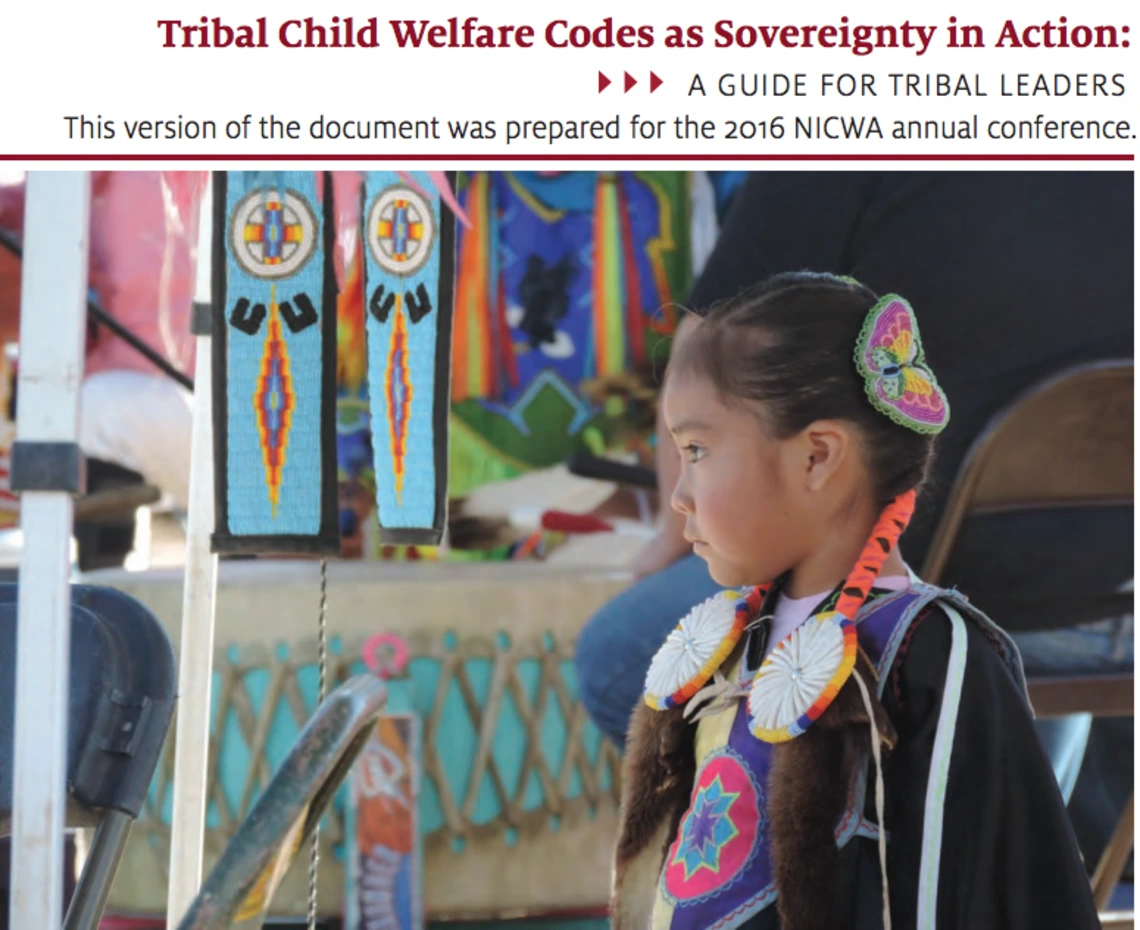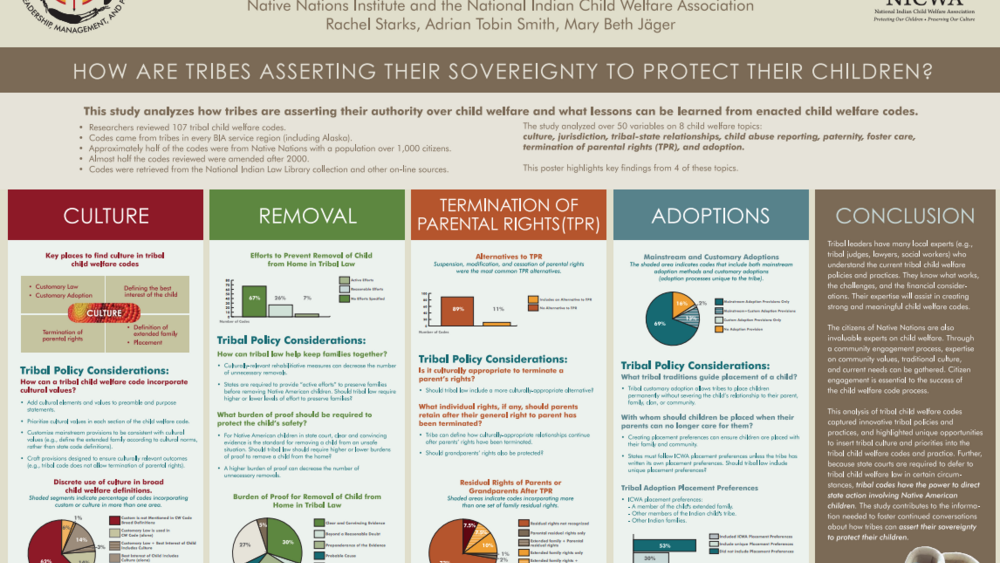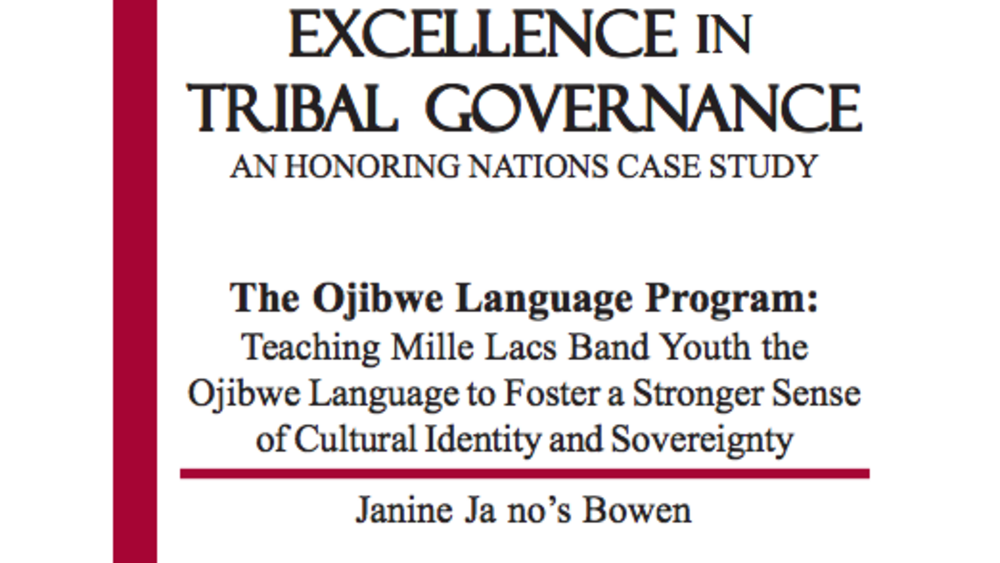
With passage of the Indian Child Welfare Act of 1978 (ICWA), Congress formally recognized Native nations’ inherent authority to govern child welfare matters and provided support for tribal self-determination over child welfare. Because ICWA “assumes that a tribal code is the governance mechanism by which a tribe establishes and implements its jurisdiction over all aspects of child well-being,” ICWA’s passage also marked the starting point for (re-)establishing tribal laws to govern the protection and care of Indian children and families.
Almost 40 years later, how have tribes responded to this opportunity? How have tribes’ child welfare laws and codes evolved? How might tribes strengthen their laws to implement their jurisdiction? How are Native nations enacting their sovereignty to protect their children?
Based on a study of 107 tribal child welfare codes conducted collaboratively by the Native Nations Institute (NNI) at The University of Arizona and the National Indian Child Welfare Association (NICWA), this report focuses on eight core aspects of tribal child welfare policy:
- Jurisdiction
- Mandatory reporting
- Alternative (differential) responses
- Paternity
- Removal of a child from the family home
- Termination of parental rights
- Permanency (guardianships and adoption)
- Best interest of the child
Where relevant, our discussions consider how tribal child welfare codes reflect tribal culture and tradition and how codes can reflect the specific needs of a tribal community. Throughout, the report aims to provide decision-relevant information for tribal leaders working to increase protections for their communities’ children and families.
Additional Information
Starks, Rachel Rose, Adrian T. Smith, Mary Beth Jäger, Miriam Jorgensen, and Stephen Cornell. 2016. "Tribal Child Welfare Codes as Sovereignty in Action. [Conference Edition]." Paper presented at the 2016 National Indian Child Welfare Association Annual Meeting, St. Paul, MN, April 4-6, 2016. Portland, OR: National Indian Child Welfare Association; Tucson, AZ: Native Nations Institute.



